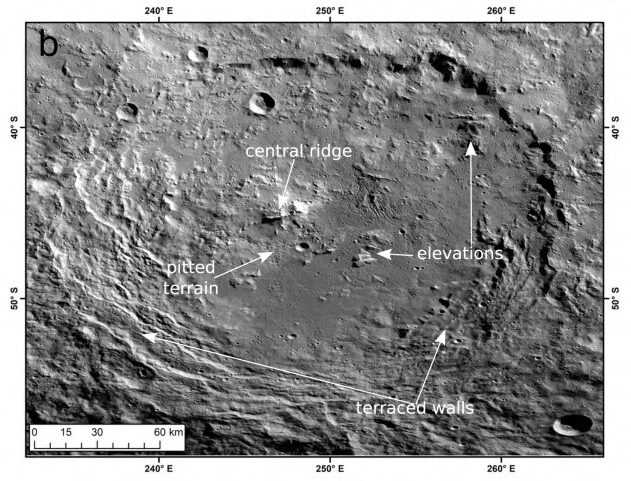
An article published in the journal “Nature Communications” reports the identification of salts and organic compounds in Urvara crater on the dwarf planet Ceres. A team of researchers used data collected by NASA’s Dawn space probe to conduct the most detailed investigation of Urvara Crater, the third-largest impact crater on Ceres. The results are not surprising and indeed confirm the discoveries of recent years concerning above all the two largest craters, Occator and Ernutet. The famous bright spots that were named faculae in jargon, mysterious before close examinations, shine thanks to the salts they contain, and now the confirmation also arrived for Urvara. This result also confirms the presence at least in the past of an underground ocean in which very salty water remained in a liquid state and perhaps there’s still some.
The mission of the Dawn space probe officially ended on November 1, 2018, leaving a treasure trove of photos and other data collected over the course of more than three years spent orbiting the dwarf planet Ceres. During the mission’s last phase, the riskiest maneuvers were carried out in which Dawn descended up to 35 kilometers above the surface of Ceres to obtain images even more detailed than those taken previously. The pictures of Urvara crater were useful for this new study on the compounds present within it.
With a diameter of about 170 kilometers, Urvara is the third impact crater on Ceres and, like the other major craters of this dwarf planet, offers important information on its geology and mineralogy. Urvara images show highly variable terrain and various geological formations ranging from terraced walls (MPS, based on data from the Dawn mission: NASA/JPL-Caltech/UCLA/MPS/DLR/IDA) to what can be considered a sort of mountain range (central ridge) within it that extends for about 25 kilometers. In the southern area, there are cliffs, areas full of boulders and faculae, the famous bright spots that have become iconic thanks to Dawn’s images.
An interesting result of the analyzes indicates that different areas of Urvara crater have very different ages with differences of up to 100 million years. That’s another result that confirms that at least in the past various geological processes have been taking place that continued well after the formation of the crater, which occurred about 250 million years ago.
Salts were detected in the past in other bright spots, such as those of Occator crater, and organic materials were detected in Ernutet crater. The combination of both types of compounds was discovered in Urvara crater for the first time. This shows, even more, the complexity of the geological and chemical processes underway at least in the past.
According to the researchers, that’s probably another case in which these compounds were brought to the surface by cryovolcanoes, which erupt liquids and volatile compounds that evaporate and disperse leaving salts mixed with other compounds such as organics on the surface. For this reason, it adds to other studies related to astrobiology that assess the potential habitability of underground oceans. In the case of the dwarf planet Ceres, it’s possible that there’s still liquid water thanks to salts that have an antifreeze effect at a depth of 40 kilometers.

